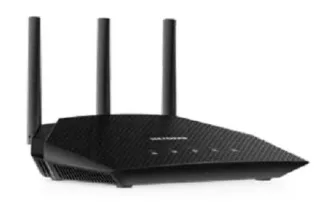
Introduction
Routers are arguably the most critical component of any modern computer network. They serve as the traffic police and delivery system of the internet. Without them, the vast, interconnected world we rely on would grind to a halt. More than just a simple connection point, the router is the linchpin of modern networking, enabling seamless communication across diverse, complex networks. This blog reveals the vital role routers play in modern networking, their functions, and why they are indispensable in today’s connected world.
What Is a Router? Definition & Core Purpose
A router, often called a Wi-Fi router, is a networking device that connects networks to ensure information reaches the correct destination efficiently and securely. These devices analyse IP addresses, determine the best routing path, and forward information accordingly. The core function of routers is to efficiently and intelligently forward data packets between different networks. They also function to manage and forward data, prevent network conflicts, improve communication speed, and maintain stable connectivity. These networking and connectivity devices are integral in keeping modern digital environments connected and functioning smoothly.
How Routers Differ From Switches & Modems? Clearing the Confusion
Routers, switches, and modems are often confused because they work together to deliver connectivity. However, each of them serves a unique function that remains clearly separate. A modem is the gateway between your local network and your internet service provider. It converts signals from your ISP into a form your devices can use.
A router distributes a single internet connection across multiple devices, manages traffic, assigns IP addresses, and keeps the network secure. A switch, on the other hand, operates within a single local network, connecting devices such as PCs, printers, and access points so they can communicate internally at high speeds. Simply put, the modem brings the internet in, the router shares and manages it, and the switch expands the number of devices that can communicate inside the network.
An Overview of the Most Popular Types of Routers Used Today
The landscape of modern networking relies on several popular router types, each tailored for different use cases, connectivity needs, and scales. Some of the most standard types include:
- Wired & Wireless Routers
Wired routers are models that use Ethernet cables to connect devices, offering higher security and stable speeds. They are the most prevalent devices in home and small-office/home-office (SOHO) environments. A wired router integrates a router, a switch, and an access point to provide both wired and WiFi connectivity. A wireless router, on the other hand, broadcasts Wi-Fi signals, allowing wireless connectivity for laptops, smartphones, and IoT devices. They support multiple devices simultaneously and are common in homes and offices.
- Enterprise Routers
These hubs are used in medium-to-large organisations to handle high throughput, security policies, VPN connections, and cloud integrations. They are typically placed at the boundary of the enterprise network to connect to the internet or other external networks.
- Core and Edge Routers
Core routers operate within the backbone of the internet infrastructure. They operate at the highest speeds and are designed to move large amounts of data. Edge routers sit at the network’s perimeters and are designed to connect internal networks to external systems. They ensure efficient packet exchange between ISPs and end users.
- Virtual and Cloud Routers
These are software-based routing solutions that run on virtual machines or cloud platforms. They provide flexible, scalable routing for hybrid and cloud-native environments.
Why Routers Are Crucial in Today’s Modern Digital Landscape?
Routers are truly the traffic controllers of the modern digital world, playing an indispensable role in almost every form of electronic communication and connectivity. Their importance has increased due to the rapid expansion of the internet, remote work, cloud services, and smart devices. Some of their notable contributions include:
- Ensuring Network Interconnectivity
These networking devices enable seamless communication between multiple networks. In homes, a router connects local devices to the internet. In businesses, these devices interconnect branch offices, cloud servers, and internal networks.
- Facilitating Data Traffic Management
A router regulates data flow to prevent congestion. They prioritise traffic using Quality of Service (QoS), ensuring performance for critical applications like video conferencing, VoIP, and industrial control systems.
- Enhancing Security and Threat Protection
Modern routers incorporate firewalls, VPNs, intrusion detection, and encryption. These built-in security layers protect networks against unauthorised access, cyberattacks, and malware.
- Supporting Scalability and Network Growth
Routers allow networks to expand without disruption. Businesses can add new users, applications, and devices while maintaining performance across distributed networking environments.
The Role of Routers in IoT and Smart Technologies
The rise of IoT has dramatically increased the number of connected devices. A router now manages communication between sensors, controllers, appliances, and cloud systems, ensuring reliable data routing and device management. Features such as dual-band Wi-Fi, mesh networking, and secure onboarding support modern IoT ecosystems.
Final Thoughts
Routers are indispensable to the infrastructure of modern digital life. They form the backbone of modern networking, enabling secure, reliable, and efficient communication across a rapidly expanding digital landscape. In essence, the router is much more than a simple box that distributes an internet signal. It is a sophisticated, multi-functional device responsible for the intelligence, security, and efficiency that defines modern networking.






















